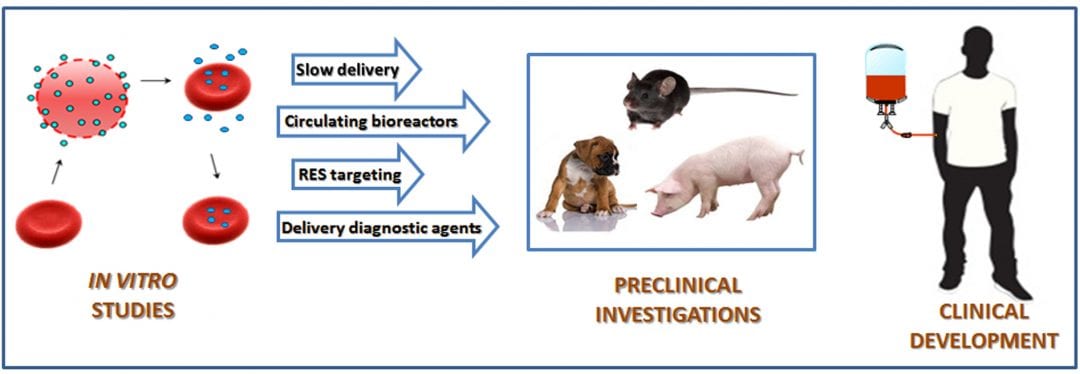Scientists have learned how to open and reseal mammalian red blood cells (RBC) without affecting their functional characteristics. Through these procedures, the RBC can be reengineered to release drugs in circulation, to maintain nanomaterials and/or contrasting agents within the vascular system, or to target pharmacologically-relevant cargoes to selected cells.
The advantages conferred by this approach are impressive, thanks to the long circulation time of RBC. Selected drugs can be administered only once-a-month, minimizing toxicities and increasing efficacy. Each individual circulating RBC can be detected and tracked in circulation by infrared fluorescence or MRI. Encapsulation of recombinant enzymes can endow the RBC with unconventional metabolic properties useful in the treatment of rare genetic diseases or cancers.
These approaches are starting to be used in the clinic and will likely be prescribed as treatments in the near future. Future developments include engineering temperature- or light-sensitive RBC, as well as magnetizable RBC that can be guided by external magnetic fields for precision drug delivery.
You can read more in the review article by Francesca Pierigè, Noemi Bigini, Luigia Rossi, and Mauro Magnani from the University of Urbino in WIREs Nanomedicine and Nanobiotechnology: “Reengineering red blood cells for cellular therapeutics and diagnostics”.

















